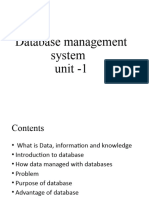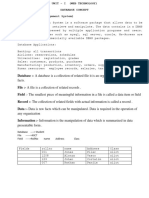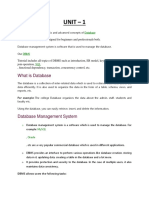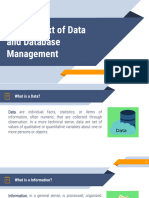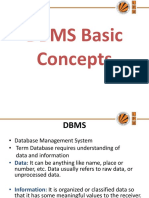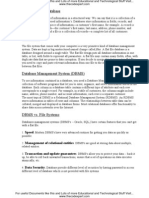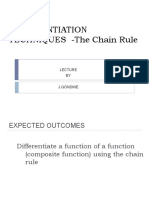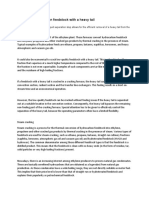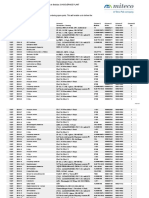0% found this document useful (0 votes)
9 views15 pagesSQL Commands UNIT - 5
The document provides an overview of basic database concepts, including definitions, purposes, advantages, and disadvantages of database management systems (DBMS). It highlights the differences between file systems and DBMS, emphasizing the structured approach of DBMS for managing data, ensuring data integrity, and facilitating efficient data retrieval. Additionally, it introduces SQL commands categorized into DDL, DML, DCL, DQL, and TCL for effective database management.
Uploaded by
n37142693Copyright
© © All Rights Reserved
We take content rights seriously. If you suspect this is your content, claim it here.
Available Formats
Download as DOCX, PDF, TXT or read online on Scribd
0% found this document useful (0 votes)
9 views15 pagesSQL Commands UNIT - 5
The document provides an overview of basic database concepts, including definitions, purposes, advantages, and disadvantages of database management systems (DBMS). It highlights the differences between file systems and DBMS, emphasizing the structured approach of DBMS for managing data, ensuring data integrity, and facilitating efficient data retrieval. Additionally, it introduces SQL commands categorized into DDL, DML, DCL, DQL, and TCL for effective database management.
Uploaded by
n37142693Copyright
© © All Rights Reserved
We take content rights seriously. If you suspect this is your content, claim it here.
Available Formats
Download as DOCX, PDF, TXT or read online on Scribd
/ 15




